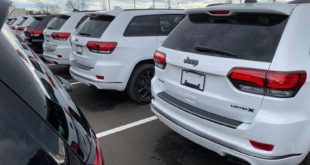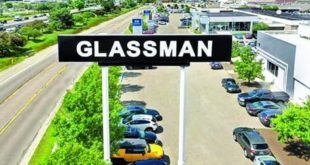wo longtime Toyota Financial Services leaders, Pete Carey and Karen Ideno, switched gears in August 2019 to establish Mazda Financial Services, a captivelike venture within the company. Forming the new captive within the highest-volume U.S. auto lender would be a departure of sorts for both finance veterans.
The two pitched the private-label business strategy to Mazda Motor of America Inc. last year, winning the business from JPMorgan Chase, which had operated Mazda Capital Services since 2010.
At the time, Carey worked as group vice president of TFS Service Operations and board chairman of Toyota Financial Savings Bank. Ideno was the lender’s chief marketing officer. Together, they bring 60 years of experience in automotive finance to their new enterprise.
Carey, as Mazda Financial Services’ president, and Ideno, as group vice president of sales, product and marketing, were tasked with fashioning an entire business line from scratch. They hired nearly 100 employees, created branding and marketing materials and deployed new technology — all while learning about the culture and business of a new-vehicle brand. They had seven months to deliver a fully formed captive lender.
Two weeks from the finish line, there was a significant and unprecedented snag — a global pandemic that upended operations, closed automaker factories, shuttered dealership operations and put millions of Americans on unemployment.
Carey and Ideno spoke with Staff Reporter Jackie Charniga about the challenges of deploying attractive incentives to bolster flagging sales, pivoting to remote operations and supporting 500 new dealership partners. Here are edited excerpts.
Q: How did Toyota Financial Services secure the Mazda business?
A: Carey: Our success in securing the business was on the heels of the extended partnership that Toyota and Mazda invested in from a manufacturing standpoint in building the plant in Huntsville, Ala. As they were finalizing those plans, it led to other discussions about what other synergies can the two companies explore. That led to a phone call to us at TFS to reach out to our OEM partner, now in Irvine, Texas. They were getting ready to do [a request for information] across the banking dimension of their business, and we participated in [a request for proposal].
Ideno: Mazda has a unique brand positioning and certain customer expectations and dealer needs very unique from all the other automotive makes. Our opportunity was to create those appropriate products, given their business objectives.
What were some of those objectives?
Carey: All the OEMs are starting to really lean into connected-car data. We were using data to identify strategies associated with our marketing. Data analytics, and the possibilities that are going to be availed to us as we aggregate data, was very important to them. Targeted marketing is becoming increasingly important. They also were pretty enamored by the fact that we had an insurance platform that was branded and they didn’t. Their dealers use external parties, historically.
Ideno: That’s one of the other benefits that we wanted to extend to our Mazda dealers, to be able to provide protection products that are backed by the OEM. They can put it onto our contracts and they can also be sold separately, so there’s a lot of flexibility and agility with our branded products. We do have that dedicated sales force laser-focused on the dealer experience and their needs and support of their customers.
Carey: When we looked at the support that Mazda was receiving on the Chase relationship, I think they had somewhere in the neighborhood of 20 or so sales professionals in the field. We brought three times that number plus, in the way of support. We’d like to have our area sales managers manage roughly between 10 and 15 relationships because they spend an awful lot of time developing income opportunities and in supporting the dealers across the dimensions of selling cars and retaining customers.
This deal represented the largest single expansion activity ever undertaken by Toyota Financial Services, one that establishes a foundation for other potential private-label opportunities. Could you expand on that?
Carey: We’ve looked at what our core competencies were, what we believed we had done well enough and holistically enough to potentially offer to the broader industry. This company is the first attempt at us setting up a platform to manage assets for another particular OEM. Our focus right now is to make Mazda the best company that it can be. As other opportunities present themselves, we will evaluate where we are with our maturation and what our appetite might be. If you would have asked me 10 years ago, “Will Toyota or Lexus really do anything that is outside of their ecosystem?” I probably would have said no. But if you think about the last five years or so, there have been partnerships across the automotive industry, and it really is one of the few industries that hasn’t gone through any real discernible integration or consolidation.
What was some of the work that needed to be done to launch the company?
Ideno: We did want to ensure that there were separate entities from a data perspective, to have an origination system that is separate today from our other brands. Because that’s our responsibility from a compliance perspective to ensure that we hold ourselves very strongly accountable to keeping data separate.
Carey: This was a new line of business for us. We wanted to make sure that we invested in understanding what was important to Mazda, how Mazda was projecting itself in the marketplace. Customers don’t differentiate between different areas of a particular brand, so a finance company really needs to marry what the OEM is projecting. We had to build websites, we had to build point-of-sale material. We had to build contracts and the like. And that’s what Karen did for us with Toyota for so many years.
On my side of the equation, we did have a technology stack that needed to be built. We did build a new loan origination system. We did build a new insurance platform. We also had to hire a team. Karen and I worked very closely together in doing so, and we were afforded some great latitude. We brought people from TFS that we had known and worked with and had confidence in. We hired people from Toyota dealerships. We also brought some of the folks over and had a great exchange and a great transition with Mazda Capital Services.
What were the major challenges launching the company at the beginning of the U.S. outbreak?
Ideno: We are very relationship-based, and we interface a lot with our dealers. Pete and I were fortunate a little earlier on to get out to meet a lot of our dealers, but our field force had not. And so they have not been able to get into the dealerships and start building those relationships. We pivoted virtually. Our team members operating at the HQ and in our field organization are working from home. We are extremely proud of how our organization came together to ensure our team members could efficiently operate.
Carey: [Mazda dealers] were telling us on a weekly basis, “This is what our customer experience has turned into. We’re having to furlough associates. We’re concerned about inventory.” We were able to work with Mazda North America to immediately put together some programs that were resonating with the dealers. Cash was quickly becoming a concern. The entire industry, for 45 days or so, really sputtered and sputtered hard. We were trying to tie it back to what happened with Lehman, and it was a very different dynamic.
What are some of the business changes you expect to come from this COVID-19 period?
Carey: Dealers have, to this point, been adding back staff and getting back to what I would just call whatever the new normal is. Some of them have not grown back as big as they were. They made decisions that are going to be long lasting. Some of them are reinvesting in vendor partnerships to help generate leads that they had cut off because they were trying to save expenses. Some of them are looking at new technologies so that they can be more digitally oriented. We have seen incredible transformations. I think there are going to be clear winners and clear losers through this.


